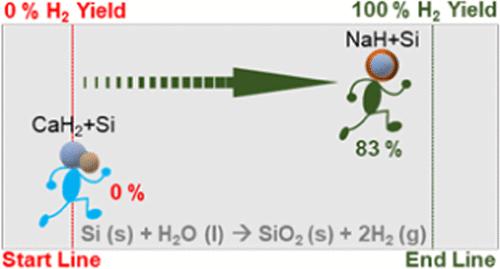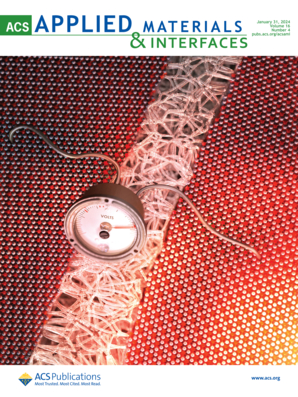Silicon-Based Sodium Hydride Core–Shell Structure for Portable Hydrolytic Hydrogen Generation
IF 8.3
2区 材料科学
Q1 MATERIALS SCIENCE, MULTIDISCIPLINARY
引用次数: 0
Abstract
Hydrogen production from silicon (Si) hydrolysis is environmentally friendly, safe, portable, and promising. However, the self-protected oxide layer around Si and a sluggish hydrolysis rate impede its practical utilization. To address this problem, we introduced sodium hydride (NaH) to form the core–shell structure of NaH/Si composites via a straightforward one-step, hand-mixing method in an ambient environment. NaH-based Si-M composites exhibit 83% hydrogen yield and a 52.7 mL/min hydrogen generation rate at 1–0.7 molar ratios. The hydrolytic activity includes the breakdown of NaH and the continuous hydrolysis of Si. X-ray diffraction, scanning electron microscopy, nanoindentation, and reaction observation studies have verified that NaH is pivotal in promoting thorough Si hydrolysis and attaining the maximum achievable yield compared to calcium hydride (CaH2). NaH/Si composites showed excellent hydrogen generation performance compared to CaH2/Si composites with microstructure silicon Si-S ≈ 1–3 μm, Si-M ≈ 75 μm, and Si-L ≈ 75–425 μm. Our study provided an innovative design and idea for utilizing cost-effective and easily transportable hydrogen production materials for practical applications, which has the potential for further advancement.

求助全文
约1分钟内获得全文
求助全文
来源期刊

ACS Applied Materials & Interfaces
工程技术-材料科学:综合
CiteScore
16.00
自引率
6.30%
发文量
4978
审稿时长
1.8 months
期刊介绍:
ACS Applied Materials & Interfaces is a leading interdisciplinary journal that brings together chemists, engineers, physicists, and biologists to explore the development and utilization of newly-discovered materials and interfacial processes for specific applications. Our journal has experienced remarkable growth since its establishment in 2009, both in terms of the number of articles published and the impact of the research showcased. We are proud to foster a truly global community, with the majority of published articles originating from outside the United States, reflecting the rapid growth of applied research worldwide.
 求助内容:
求助内容: 应助结果提醒方式:
应助结果提醒方式:


